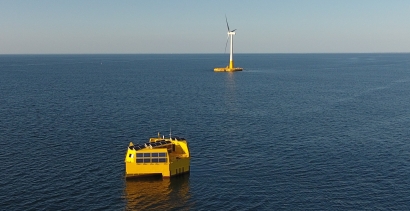
How does this process work? Is it sustainable for the long term, and will the world adopt the practice quickly enough to reduce the damage from harmful forms of hydrogen creation?
There are several techniques to produce hydrogen, each notated by a color indicating its method and environmental impact.
Hydrogen generated through fossil fuels is known as “gray hydrogen.” Environmentalists are trying to phase out this approach with inventions like the green hydrogen electrolyzer, which produces “green hydrogen.”
This green hydrogen can only be labeled as such because it is generated exclusively with renewable energy sources. There are other sustainable processes to create hydrogen – including “blue hydrogen” produced with carbon capture and storage (CCS) – but the future needs more green hydrogen because it is the least harmful option for the planet.
The world primarily relies on gray hydrogen – it’s around 96% of what humans produce. This results in harmful carbon and methane emissions. Because the only byproduct of the fuel cell in the electrolyzer is water, it could be a net-zero solution to the hydrogen conversation.
Visionaries have already performed onshore tests, but how well does it perform on the open seas?
French Hydrogen producer Lhyfe initiated the Sealhyfe project to explore the capabilities of green hydrogen using wind power. Continued testing will prove its efficiency, but its capacity is currently 400 kilograms (1 megawatt – MW – of power) of hydrogen per day without worsening the effects of climate change other forms of hydrogen-making produce.
Electrolysis – powered by a connection to a wind turbine – separates water into its essential parts: Hydrogen and oxygen. The electrolyzer stores the hydrogen from this reaction for countless marketable uses.
This includes refineries and EV (electric vehicle) manufacturing, though its applications extend into plenty of sectors. This first offshore test will prove the technology’s durability, as extreme conditions could test its stability on the water. Techs will remotely operate the electrolyzer, checking its movements and conditions against environmental stressors.
At-sea electrolysis will have to work double duties. It must work to desalinate and purify seawater on top of hydrogen extraction. If Sealhyfe is capable of this multitasking, it could unveil eco-friendly and energy-efficient insights for even more industries, such as water treatment or marine ventilation, to amplify the creation of a greener and healthier future for humans.
This offshore electrolyzer is the first step into a greener future because it proves this is a practical method. However, multiplying this process on a commercial scale will be a challenge.
The world’s current grid isn’t the most compatible with green hydrogen, and the capital costs are too high to make swift progress in mass manufacturing. It’s currently more economical to produce hydrogen through steam via natural gas, so it will take convincing and technological advancements to bypass this resistance.
It will likely act as a supplement to other green forms of energy, since using green hydrogen exclusively for every application would require considerable effort. The cost of creating electrolyzers is steep, but analysts suggest this cost could be reduced by 80% over the long term. This requires design and material extraction innovations, and eliminating antiquated electrolyzers in favor of more adaptable and better-operating versions that use fewer precious metals.
It will also put wind power to a reliability test – is it capable of continually producing consistent energy to power the electrolysis process? Gathering this data will take time, and implementing the correct formula of turbines and electrolyzers will be a case of trial and error to account for all variables.
This step for green hydrogen gives humans a tangible glimpse into the future of electrolysis technology when mixed with renewable energy. Though humans still need to perform thorough testing and find ways to overcome economic hurdles, offshore green hydrogen through electrolyzers could provide hope for an innovative future of sustainable energy.

